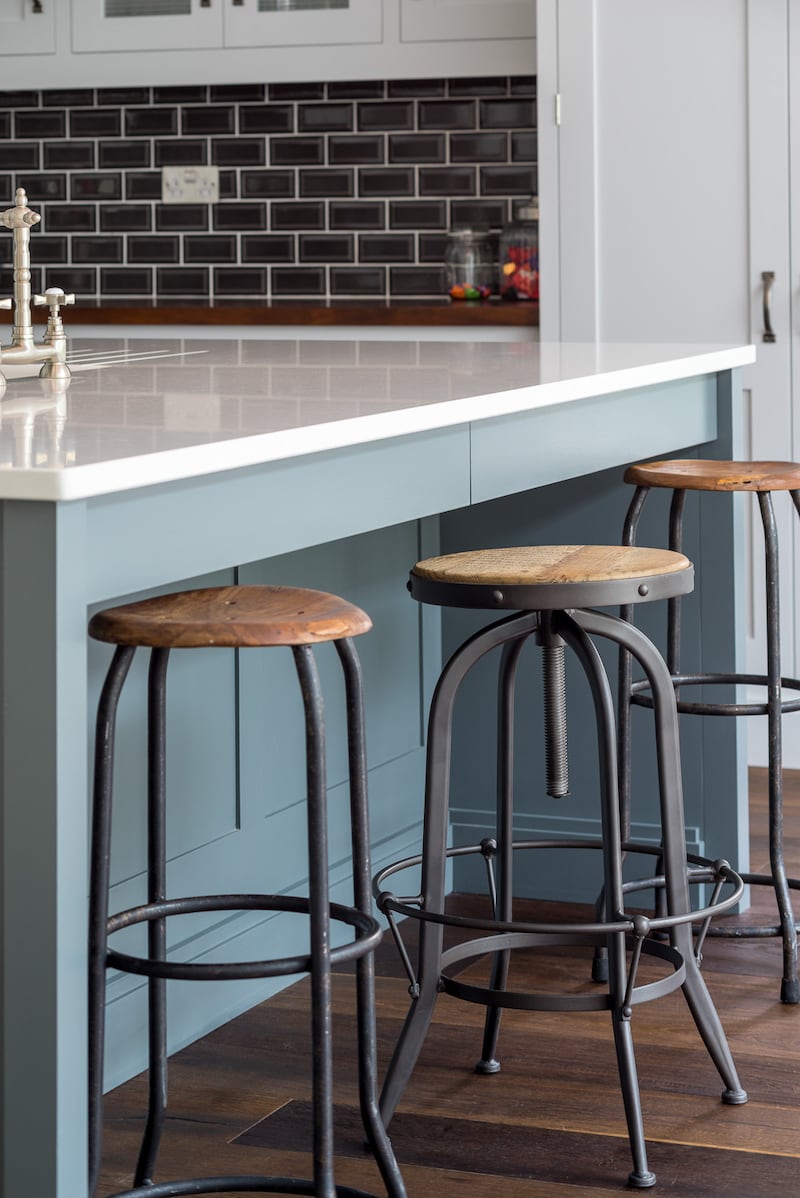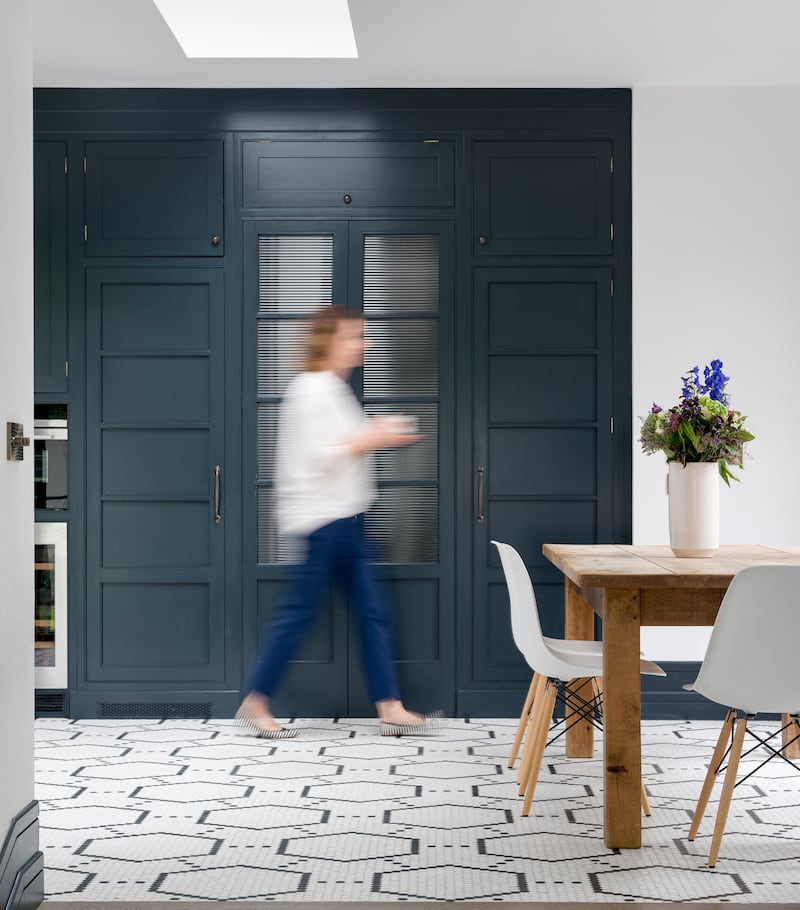Until recently, the options for refreshing a kitchen with paint were limited to repainting walls, possibly the floor and the cabinets, only if they were made from solid wood. Now, however, every surface in the kitchen, regardless of the material, can be painted. I chatted with paint expert Kate Gaynor from the Paint Hub to find out how to successfully tackle a kitchen refresh with paint.
Seek advice from your local paint shop
“You can transform any room in your home quickly and cost-effectively with paint. You just need to make sure you have the right equipment,” she explains. Visit your local paint shop, explain what you plan to do and get their advice about which products to purchase. You’ll typically need a primer, topcoat, brush, roller and sandpaper. If you’re looking at painting a standard-sized kitchen, you should expect to spend in the region of about €200.
Choose the proper primer
Paint technology has evolved considerably in recent years. The number of surfaces that can now be painted to achieve a durable finish has grown significantly.
In the past, you could paint only a solid-timber kitchen. Now, even a laminate or high-gloss kitchen can be successfully repainted. “You can paint any type of kitchen. It all comes down to buying the correct primer,” Gaynor explains. Historically, primers were limited with regard to the surfaces where you could use them.
Actor Armie Hammer resurfaces as host of celebrity podcast
Heart-stopping Halloween terror: 13 of cinema’s greatest jump scares
Doctor Odyssey’s core message: just imagine Pacey from Dawson’s Creek holding you tight and saying, ‘Shhh, it’s okay’
Conor Niland’s The Racket nominated for William Hill Sports Book of the Year
Painting a laminate or glossy surface requires a strong adhesion primer. The primer’s job is to turn the smooth surface into a rough surface to which the paint can adhere. If you are painting a pine kitchen, Gaynor recommends choosing an isolating primer to mask the yellow tone of the wood and any knots. When selecting your primer, look for a recommended product for the surface you intend to paint.

“There is a primer for practically everything now,” she says. If you are unsure, seek advice from your local paint store. However, one of the only surfaces you can’t paint is linoleum flooring. Lino, as it is more commonly known, is a soft and flexible material, so it moves underfoot. A durable paint which is hard by nature will crack when you walk on it.
Update something you don’t like
Paint is also the ideal way to mask a feature in a kitchen that you don’t like. “If you have something expensive like a solid kitchen or black granite countertop that you don’t like, paint it,” says Gaynor.
When painting a countertop, always apply a final coat of sealer to ensure the surface is durable. The finished countertop, if painted correctly, should withstand heat, scrubbing and washing. But do bear in mind that paint won’t cope with hot pots coming straight out of the oven or chopping directly on to the painted surface. And remember that the best thing about painting something is if you decide you don’t like it after painting it, you can always sand it back to how it was before.

Make sure the surface is spotless
Make sure all surfaces are spotlessly clean before you start painting. This is true for any painting project. If the surface is spotless, the paint can penetrate and will last. Gaynor advises cleaning surfaces at least twice and finishing with a final wipe of very hot water with a white cloth to check for any residue. “Dust is one of the most serious contaminants when it comes to paint,” she warns. Dust forms a web which prevents the paint from gripping the surface. Avoid doing anything that raises dust before painting.
How to deal with old painted surfaces
If you’re working on a surface that has already been painted, you only need to remove the areas of old paint that are not well bonded. You can leave the rest. An electric sander or medium-coarse sandpaper should remove what you need. Gaynor recommends always choosing the right sandpaper for the job you are doing. If you choose something too coarse, you risk scratching the surface you are working on. Once you’ve removed the old paint and you’re happy with the surface, you should apply a water-based primer and paint. The reason for choosing a water-based product is to avoid any chemical reaction between the old and new paints.






